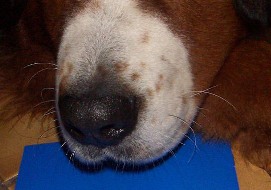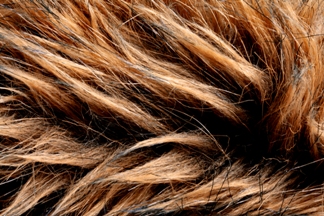Canis lupus famliliaris
Adaptation

A dog's brain is largely dominated by an olfactory cortex. The olfactory bulb, which perceives odors, is 4 times larger than a humans. This blub has 125 to 220 million smell sensitive receptors. A dog is able to discriminate odors at a concentration nearly 100 million times lower than a human.

The frequency range of a dog's hearing is approximately 40 Hz to 60,000 Hz. This means that a dog can detect sounds way out of both ends of the human hearing spectrum. Dog's also have 18 or more muscles that can tilt, rotate, raise or lower the dog's ear. This allows the dog to have ear mobility and pinpoint exact locations of a sound.

A dog's visual system is engineered to
serve the purpose of hunting. A dog's visual acuity is poor, but
it has a very high visual discrimination. It has been shown that
dogs are able to discriminate between two different humans from
distances up to a mile. Dog's often rely on their vision in low
light settings because they have very large pupils and a high
density of rods in the fovea to detect the small amount of
light. Dogs are also dichromate, which
means they have color vision equivalent to red-green color
blindness in humans.
-Long nosed breeds have a very wide field of
vision
-Long muzzled breeds have a field of vision up to 260 degrees,
while humans only have 180 degrees.
-Short nosed breeds have a central patch with up to 3 times the
density of nerve endings, which gives them sight more like a
humans.
-Broad headed breeds with short noses have a field of vision
similar to humans.

Dogs either have a double coat or a single coat of fur. A double coat is made up of a coarse topcoat and a soft undercoat, just like a wolf. A single coat only has a topcoat. Dogs with double coats tend to live in colder climates. Domestic dogs often display countershading. This countershading is a natural camouflage. A countershaded animal has dark coloring on the upper surface of the body and light coloring below. This reduces the general visibility of the animal to help escape predators.
To learn how dogs interact with other species, click here.